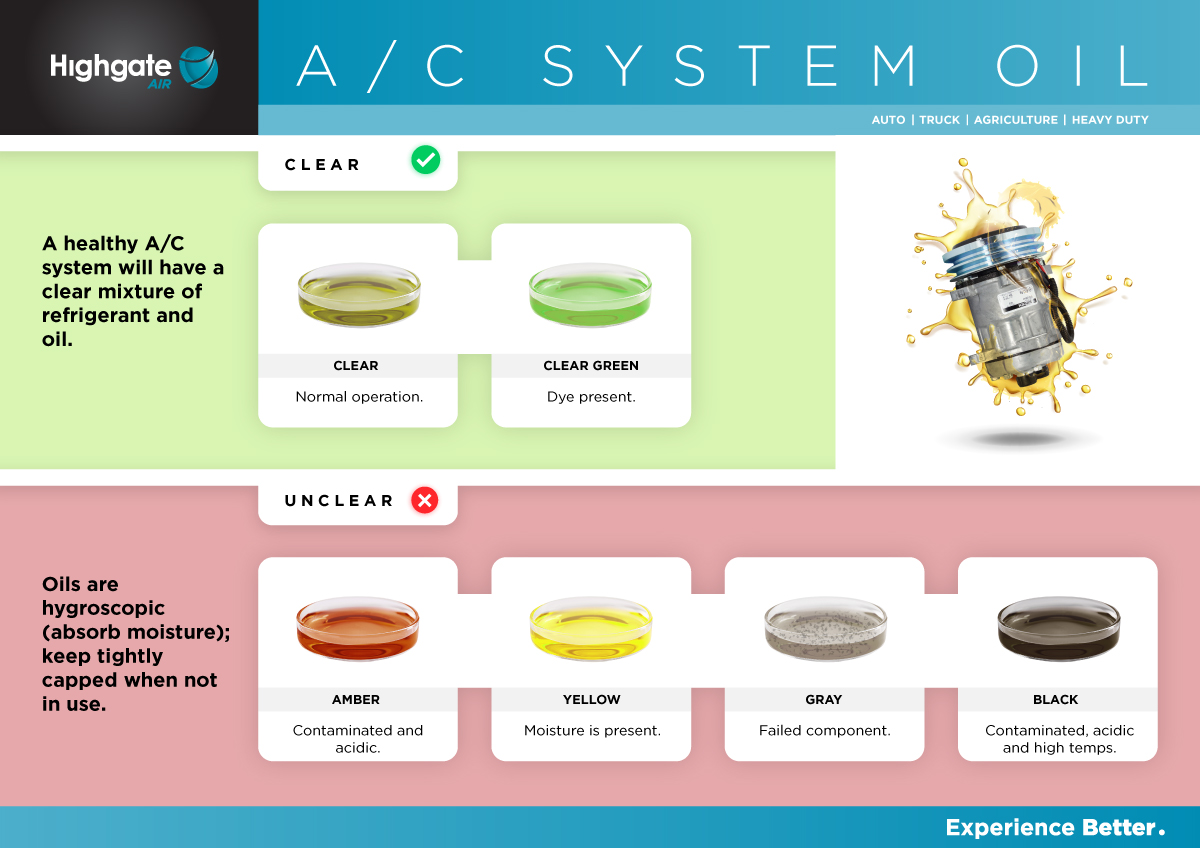BEST PRACTICE: While there are universal oils available, we always recommend using the right oil for the job. Because universal oils don’t have the same viscosity of specially formulated oils, using them will inevitably lead to compressor damage. Oil mixtures will lead to poor lubrication, damaged seals and increased wear. The mixing of different types of oils can also create paraffin that will block the flow of refrigerant and lead to system failure.
TIP: The combination of refrigerant, moisture and oil will create hydrochloric acid and damage the system. Do not leave oil open to the atmosphere for long periods. Highgate Air provides PAG oil in a moisture-sealed bottle to alleviate this issue.
We recently shared the importance of regularly assessing and replacing the mighty drier, and it’s a similar story with oil in the A/C system. The drier will remove any solid impurities in the oil and will also capture moisture. When you’re changing the drier, it’s also wise to check the compressor oil - levels and purity.





